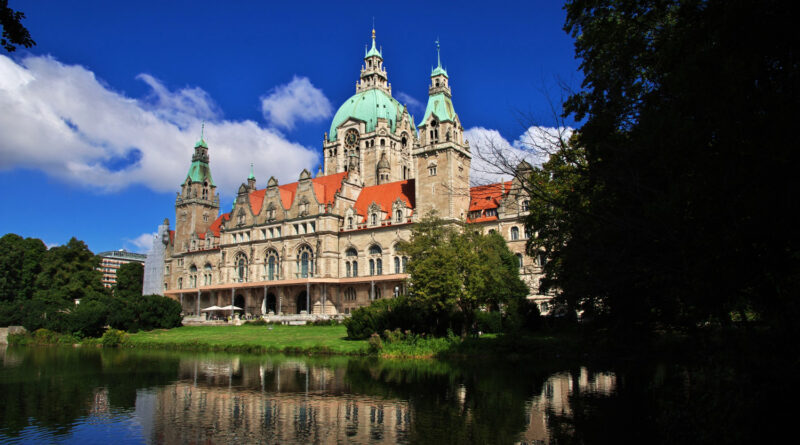Castles to Visit in Denmark
Denmark’s landscape is dotted with stunning castles that echo the country’s royal heritage, Renaissance beauty, and Viking legends. From the iconic Kronborg Castle—immortalized in Shakespeare’s Hamlet—to the baroque grandeur of Frederiksborg Castle, these fortresses tell the story of Denmark’s royal past. Whether you’re a history enthusiast, an architecture lover, or a traveler seeking fairy-tale settings, Denmark’s castles deliver unforgettable experiences.
Kronborg Castle – The Home of Hamlet
Kronborg Castle, grandly located at the Oresund Strait’s narrowest point in Helsingor, is among Denmark’s best-known landmarks. Constructed in the 16th century, this Renaissance castle was crucial to the control of shipping between Denmark and Sweden. It became world-famous, though, as the backdrop for Elsinore in Shakespeare’s Hamlet. Complete with its sumptuous ballroom, dark dungeons, and massive battlements, the castle gives visitors a journey through the ages. A UNESCO World Heritage Site, Kronborg is not only fascinating with its age and beauty but also offers cultural activity, including the popular Shakespeare Festival each year.
- Located in Helsingor (Elsinore)
- UNESCO World Heritage Site
- Renaissance architecture
- Cultural significance due to Shakespeare’s Hamlet
- Highlights: Royal chambers, dungeons, Shakespeare Festival
Frederiksborg Castle – A Danish Versailles
Frederiksborg Castle, situated in the town of Hillerod, is a breathtaking representation of Danish Renaissance architecture as well as royal might. Built in the early 1600s by King Christian IV, the castle is perched on three islets in a serene lake, framed by splendid baroque gardens. Now home to the Museum of National History, it presents centuries of Danish monarchy, culture, and art through lavish portraits, furniture, and exhibitions. Highlights are the stunning Chapel of Orders and the Great Hall. With its crimson-brick turrets, rich interiors, and peaceful surroundings, Frederiksborg Castle is usually likened to Versailles and is a culture vulture’s must-see.
- Located in Hillerod
- Built by King Christian IV in the 17th century
- Houses the Museum of National History
- Stunning chapel, baroque gardens, and grand halls
- Art collections from Denmark’s history
Rosenborg Castle – Royal Treasures in Copenhagen
Delightful Renaissance palace Rosenborg Castle is quietly situated in the very heart of Copenhagen. Constructed in the early 17th century by the dashing King Christian IV, it was a summer palace for the royal court and a treasury of regal treasures. Nowadays, it houses the Danish Crown Jewels and royal regalia, such as glittering tiaras, swords, and coronation thrones. The castle is exquisitely restored, with ornamented rooms that provide a glimpse of Denmark’s monarchical history. Encircled by the fashionable King’s Garden (Kongens Have), Rosenborg is a peaceful and regal retreat in the midst of the city, attracting history enthusiasts and tourists in general.
- Central Copenhagen
- Built as a royal summer residence
- Houses the Danish Crown Jewels
- Beautiful gardens (King’s Garden)
- Renaissance-style design with lavish interiors
Egeskov Castle – A Living Fairy Tale
Egeskov Castle, situated on the island of Funen, is Europe’s finest Renaissance water castle preserved. Constructed in 1554, it stands dramatically on top of a lake, surrounded by beautiful gardens and moats. Originally built for protection during times of turmoil, the castle itself now seems like a fairy tale. It contains antique furnishings, works of art, and even old toys. The grounds surrounding it comprise lovely parklands, a maze, a treetop walk, and an old car and motorcycle museum, making it Denmark’s most popular family destination. Egeskov Castle is a unique combination of historical richness, nature, and hands-on fun.
- Located on Funen Island
- Europe’s best-preserved moat castle
- Family-friendly: Maze, vintage car museum, treetop walk
- Surrounded by romantic gardens
Christiansborg Palace – Power Hub of Denmark
Located on Slotsholmen in the heart of Copenhagen, Christiansborg Palace is special because it contains all three branches of Denmark’s government: Parliament, Supreme Court, and Prime Minister’s Office. Although today’s building was constructed in the early 20th century, the location has been used for royal buildings for more than 800 years. The lavish Royal Reception Rooms, the magnificent Throne Room, the Royal Stables, and even some underground ruins from previous castles are all accessible to visitors. It is still employed for official royal rituals today. Christiansborg successfully combines royal heritage with political importance, so it is a must-see for anyone interested in history and contemporary government.
- Home to Parliament, Supreme Court, and Prime Minister’s Office
- Royal reception rooms, royal stables, and tower
- Historic ruins beneath the palace
- Blend of political and royal history
Dragsholm Castle – Ghosts and Gourmet
Dragsholm Castle, set amidst the picturesque landscape of Zealand, is one of Denmark’s oldest castles, dating back to the 13th century. This castle is notable not only for its tiered architecture—medieval defenses mixed with baroque beauty—but for its otherworldly legends. Rumored to be haunted by more than one spirit, including the world-renowned “White Lady,” it is a rare blend of history and intrigue. Now, Dragsholm is a high-end hotel and the location of a Michelin-starred restaurant that prides itself on local ingredients. Whether you’re in search of supernatural stories or gourmet dining in a historic atmosphere, Dragsholm provides an experience that’s not to be forgotten.
- One of the oldest secular buildings in Denmark
- Mix of medieval, Renaissance, and baroque styles
- Haunted legends (White Lady)
- Luxury hotel and Michelin-star restaurant today
From legendary ghost stories to royal pomp, Danish castles offer more than just historical insight—they are gateways to the past and present. A journey through these castles gives you a real taste of Denmark’s royal legacy, architectural evolution, and cultural depth.

